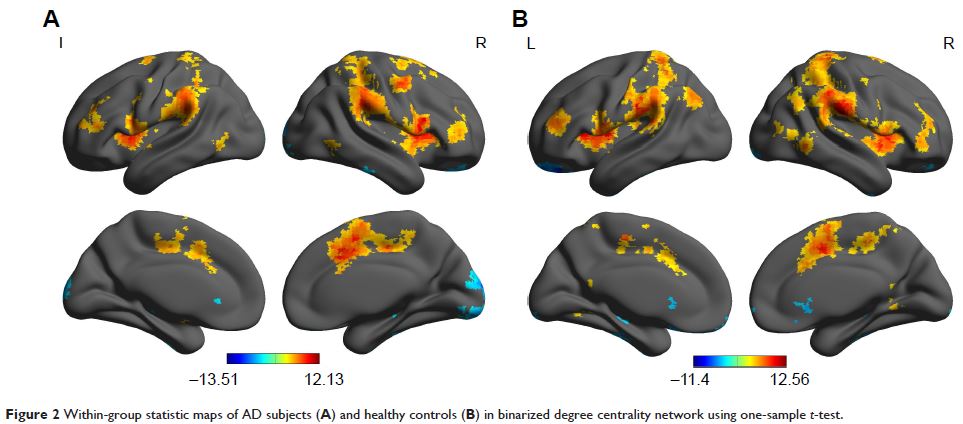9 5 3 6 3
论文已发表
注册即可获取德孚的最新动态
IF 收录期刊
- 3.3 Breast Cancer (Dove Med Press)
- 3.4 Clin Epidemiol
- 2.5 Cancer Manag Res
- 2.9 Infect Drug Resist
- 3.5 Clin Interv Aging
- 4.7 Drug Des Dev Ther
- 2.7 Int J Chronic Obstr
- 6.6 Int J Nanomed
- 2.5 Int J Women's Health
- 2.5 Neuropsych Dis Treat
- 2.7 OncoTargets Ther
- 2.0 Patient Prefer Adher
- 2.3 Ther Clin Risk Manag
- 2.5 J Pain Res
- 2.8 Diabet Metab Synd Ob
- 2.8 Psychol Res Behav Ma
- 3.0 Nat Sci Sleep
- 1.8 Pharmgenomics Pers Med
- 2.7 Risk Manag Healthc Policy
- 4.2 J Inflamm Res
- 2.1 Int J Gen Med
- 4.2 J Hepatocell Carcinoma
- 3.7 J Asthma Allergy
- 1.9 Clin Cosmet Investig Dermatol
- 2.7 J Multidiscip Healthc

酒精依赖的异常内在功能枢纽:体素方法度中心性分析 (Voxelwise degree centrality analysis) 所产生的证据
Authors Luo X, Guo LH, Dai XJ, Wang Q, Zhu W, Miao X, Gong H
Received 27 May 2017
Accepted for publication 27 June 2017
Published 28 July 2017 Volume 2017:13 Pages 2011—2020
DOI https://doi.org/10.2147/NDT.S142742
Checked for plagiarism Yes
Review by Single-blind
Peer reviewers approved by Prof. Dr. Roumen Kirov
Peer reviewer comments 2
Editor who approved publication: Professor Wai Kwong Tang
Objective: To explore the abnormal intrinsic functional hubs in alcohol
dependence using voxelwise degree centrality analysis approach, and their
relationships with clinical features.
Materials and methods: Twenty-four male alcohol dependence subjects
free of medicine (mean age, 50.21±9.62 years) and 24 age- and education-matched
male healthy controls (mean age, 50.29±8.92 years) were recruited. The alcohol
use disorders identification test and the severity of alcohol dependence
questionnaire (SADQ) were administered to assess the severity of alcohol
craving. Voxelwise degree centrality approach was used to assess the abnormal
intrinsic functional hubs features in alcohol dependence. Simple linear
regression analysis was performed to investigate the relationships between the
clinical features and abnormal intrinsic functional hubs.
Results: Compared with healthy controls, alcohol
dependence subjects exhibited significantly different degree centrality values
in widespread left lateralization brain areas, including higher degree
centrality values in the left precentral gyrus (BA 6), right hippocampus (BA
35, 36), and left orbitofrontal cortex (BA 11) and lower degree centrality
values in the left cerebellum posterior lobe, bilateral secondary visual
network (BA 18), and left precuneus (BA 7, 19). SADQ revealed a negative linear
correlation with the degree centrality value in the left precentral gyrus (R 2=0.296, P =0.006).
Conclusion: The specific abnormal intrinsic functional hubs
appear to be disrupted by alcohol intoxication, which implicates at least three
principal neural systems: including cerebellar, executive control, and visual
cortex, which may further affect the normal motor behavior such as an explicit
type of impaired driving behavior. These findings expand our understanding of
the functional characteristics of alcohol dependence and may provide a new
insight into the understanding of the dysfunction and pathophysiology of
alcohol dependence.
Keywords: alcohol
addiction, substance dependence, degree centrality, functional magnetic
resonance imaging, functional connectivity driving behaviour
